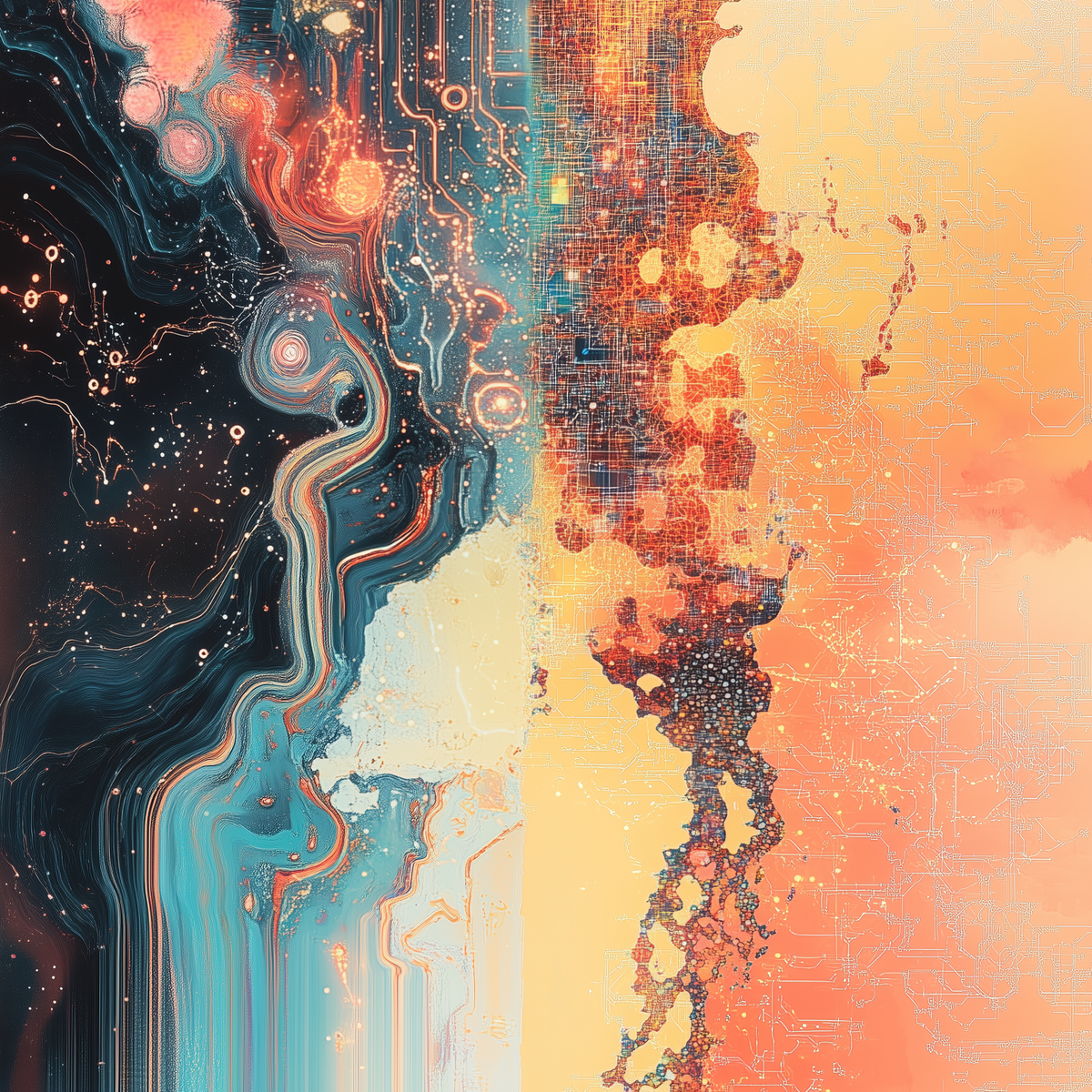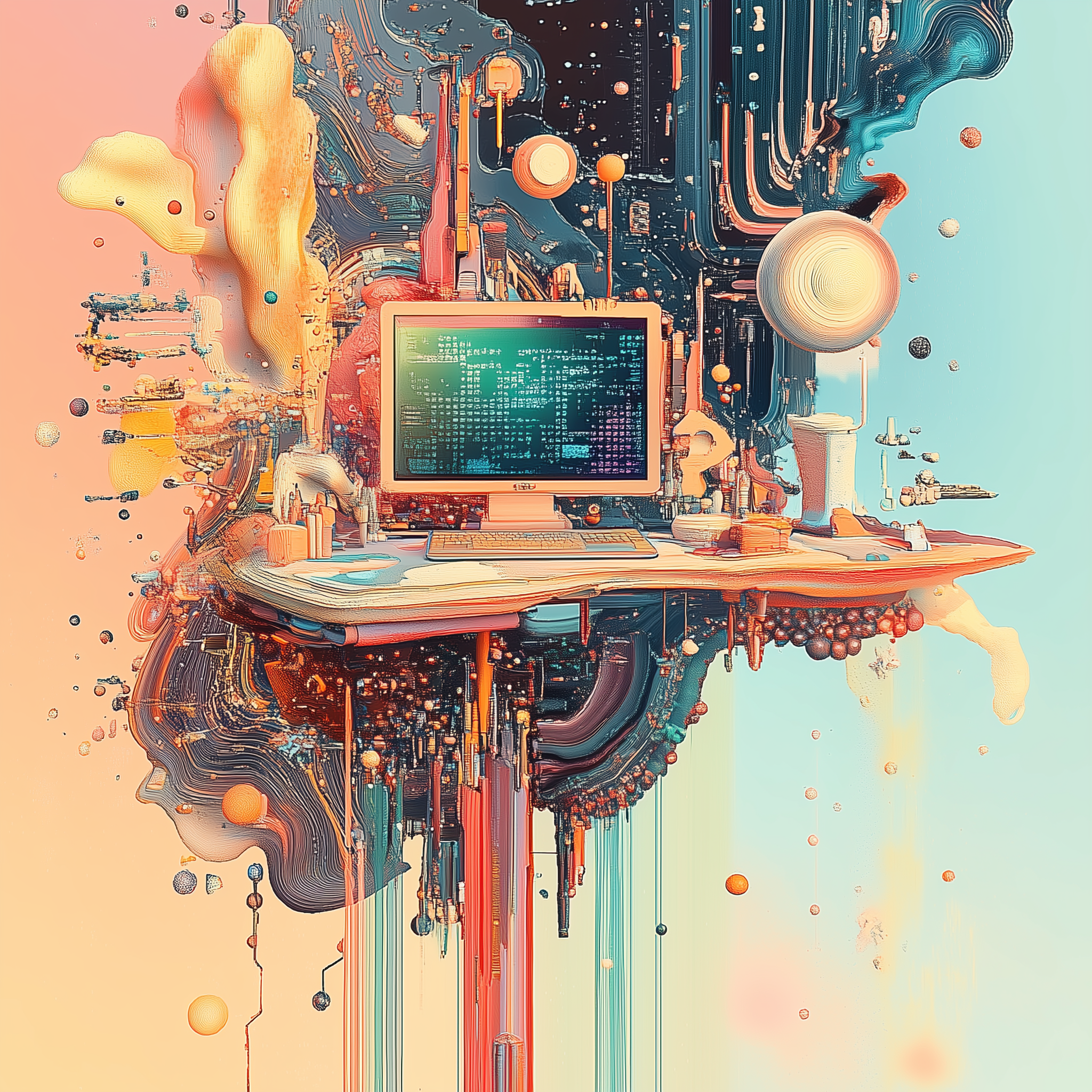Brushstrokes of Binary - LLMs and the New Artistic Renaissance
AI's paintbrush or humanity's muse? LLMs are reshaping art like samplers revolutionized music. But fear not, fellow creators—this isn't the death of art, it's a renaissance. Dive in to explore how we're painting with pixels and sculpting with syntax in the age of AI.

Remember when sampling changed the game for musicians? Well, buckle up, because Large Language Models (LLMs) are doing the same thing for visual and written artists. It's not the end of creativity as we know it—it's just another step in the ever-evolving toolkit of human expression.
The Beat Goes On: A Musical Parallel
Back in the day, sampling and looping tech shook up the music world. Some folks cried foul, claiming it was the death of "real" music. But you know what? It just opened up new avenues for creativity. Suddenly, artists could weave tapestries of sound from existing pieces, creating something entirely fresh. It didn't kill music—it expanded it.
Take Brian Eno, for example. This legendary soundscaper has long embraced technology like sequencers and samplers to innovate and create mesmerizing ambient soundscapes. Eno's work shows how these tools don't replace the musician but expand the musical vocabulary available to them.
But it wasn't all smooth sailing. The legal challenges that arose in the 80s and 90s forced artists to get even more creative. Look at Public Enemy, kings of the sample-heavy sound. Their 1988 album "It Takes a Nation of Millions to Hold Us Back" was a dense collage of samples. But by 1991's "Apocalypse 91... The Enemy Strikes Black," they had to change their tune—literally. Legal concerns meant fewer and less prominent samples. Did it stop them? Hell no. It just pushed them to find new ways to create their signature sound.
Now, we're seeing the same kind of shift with LLMs in the visual and written arts. And yeah, it's causing the same kind of uproar.
Painting with AI: The Visual Art Evolution
Just like a DJ might sample a sick beat, visual artists are now "sampling" styles and elements using image-generating LLMs. It's not about replacing the artist—it's about giving them a new set of brushes.
Think about it:
- Collage artists have been mashing up existing images for ages.
- Photographers manipulate light and reality to create their vision.
- Now, AI tools are just another way to manipulate and create.
Take Refik Anadol, a pioneer in the field of AI art. Anadol uses Generative AI to transform vast data sets into visually stunning installations. His work shows how AI can act as a co-creator, interpreting and representing complex datasets in forms that are both aesthetically pleasing and conceptually deep.
The artist's eye, their vision, their message—that's still the heart of the work. The LLM is just another tool to bring that vision to life.
Words, Words, Words: Writing in the Age of AI
For us word nerds, text-based LLMs are like having a jamming partner who knows every word ever written. They're not writing the song for you—they're just there to riff with you, to spark ideas, to help you find that perfect turn of phrase.
It's like having a thesaurus that understands context, or a writing prompt generator on steroids. The core of the writing—the ideas, the voice, the soul of it—that still comes from the human behind the keyboard.
Evolution, Not Revolution
Here's the thing: LLMs aren't replacing artists any more than samplers replaced musicians. They're just another step in the evolution of creative tools. From cave paintings to Photoshop, from oral storytelling to word processors, we've always used technology to push the boundaries of art.
LLMs are powerful, sure. They're changing the game, absolutely. But they're not the be-all and end-all. They're a new instrument in the orchestra of creativity, not the whole damn symphony.
The Human-AI Collaboration
What's truly exciting is the potential for collaboration between humans and AI. Take musician Holly Herndon, for example. She integrates AI in her music, collaborating with her digital counterpart "Spawn" to produce new vocal sounds and harmonies that would be challenging to achieve otherwise. This partnership between human creativity and artificial intelligence highlights that the technology is merely an extension of the artist's creative intent.
In my own creative process, whether I'm tweaking a digital landscape or layering sounds on my computer, these AI tools have become my trusted companions. They amplify my ideas, challenge my boundaries, and often surprise me with possibilities I hadn't imagined. But at the end of the day, it's still my vision guiding the process.
Mastering the New Tools
Just like a guitarist needs to master their instrument, artists and writers need to learn how to wield these new AI tools effectively. Tools like Ableton Live in music production allow for real-time manipulation of sound, enabling performances that respond to momentary inspiration. Similarly, AI writing assistants can help generate ideas or variations quickly, but it's up to the writer to refine and shape the final piece.

The Human Touch
At the end of the day, what makes art resonate is the human element. The emotions, the experiences, the unique perspective that only a person can bring. LLMs can assist, inspire, and even co-create, but they can't replace the spark of human creativity.
So to all the artists out there freaking out about AI: take a breath. Explore these new tools. See how they can amplify your voice, not replace it. After all, the most interesting art often comes from the intersection of human creativity and technological innovation.
LLMs aren't the end of art—they're just the beginning of a new creative era. And I, for one, can't wait to see what we all create together.
What about you? How has technology shaped your creative process? Have you experimented with AI in your art or writing? I'd love to hear your thoughts and experiences. Let's keep pushing the boundaries of what's possible and inspire each other to explore further and deeper.
Until next time, keep creating and stay curious!